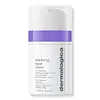What's inside
What's inside
 Key Ingredients
Key Ingredients

 Benefits
Benefits

 Concerns
Concerns

 Ingredients Side-by-side
Ingredients Side-by-side

Water
Skin ConditioningGlycerin
HumectantCocamidopropyl Hydroxysultaine
CleansingPolysorbate 20
EmulsifyingTriethanolamine
BufferingMandelic Acid
AntimicrobialDimethyl Lauramine Oleate
Skin ConditioningAcrylates/C10-30 Alkyl Acrylate Crosspolymer
Emulsion StabilisingMelia Azadirachta Leaf Extract
Skin ConditioningAnanas Sativus Fruit Extract
Skin ConditioningCarica Papaya Fruit Extract
Skin ConditioningMelaleuca Alternifolia Leaf Oil
AntioxidantPEG-60 Almond Glycerides
EmulsifyingNordihydroguaiaretic Acid
AntioxidantOleanolic Acid
Skin ConditioningTocopheryl Acetate
AntioxidantRetinyl Palmitate
Skin ConditioningPhenoxyethanol
PreservativeChlorphenesin
AntimicrobialBenzoic Acid
MaskingButylene Glycol
HumectantSorbic Acid
PreservativeCaprylyl Glycol
EmollientCarbomer
Emulsion StabilisingAloe Barbadensis Leaf Juice Powder
Skin ConditioningDisodium EDTA
Water, Glycerin, Cocamidopropyl Hydroxysultaine, Polysorbate 20, Triethanolamine, Mandelic Acid, Dimethyl Lauramine Oleate, Acrylates/C10-30 Alkyl Acrylate Crosspolymer, Melia Azadirachta Leaf Extract, Ananas Sativus Fruit Extract, Carica Papaya Fruit Extract, Melaleuca Alternifolia Leaf Oil, PEG-60 Almond Glycerides, Nordihydroguaiaretic Acid, Oleanolic Acid, Tocopheryl Acetate, Retinyl Palmitate, Phenoxyethanol, Chlorphenesin, Benzoic Acid, Butylene Glycol, Sorbic Acid, Caprylyl Glycol, Carbomer, Aloe Barbadensis Leaf Juice Powder, Disodium EDTA
Water
Skin ConditioningButylene Glycol
HumectantGlycerin
HumectantSqualane
EmollientButyrospermum Parkii Butter
Skin ConditioningCaprylic/Capric Triglyceride
MaskingPalmitic Acid
EmollientSimmondsia Chinensis Seed Oil
EmollientGlyceryl Stearate Se
EmulsifyingPropanediol
SolventHexyldecanol
EmollientPolyglyceryl-3 Methylglucose Distearate
EmulsifyingHydroxyacetophenone
AntioxidantDipotassium Glycyrrhizate
HumectantCentella Asiatica Extract
CleansingBoerhavia Diffusa Root Extract
Skin ProtectingMyrothamnus Flabellifolia Leaf/Stem Extract
HumectantTasmannia Lanceolata Leaf Extract
Skin ConditioningBrassica Campestris Sterols
EmollientZingiber Officinale Root Extract
MaskingTocopherol
AntioxidantLactobacillus Ferment
Skin ConditioningCetylhydroxyproline Palmitamide
Skin ConditioningCaprylyl Glycol
EmollientTriolein
Skin ConditioningMaltodextrin
AbsorbentBisabolol
MaskingXanthan Gum
EmulsifyingCetearyl Alcohol
EmollientMyristic Acid
CleansingTetrasodium Glutamate Diacetate
Hydroxystearic Acid
Cleansing1,2-Hexanediol
Skin ConditioningSodium Hydroxide
BufferingCitric Acid
BufferingSodium Polyacryloyldimethyl Taurate
Emulsion StabilisingAmmonium Acryloyldimethyltaurate/Vp Copolymer
Stearic Acid
CleansingAcacia Senegal Gum
MaskingWater, Butylene Glycol, Glycerin, Squalane, Butyrospermum Parkii Butter, Caprylic/Capric Triglyceride, Palmitic Acid, Simmondsia Chinensis Seed Oil, Glyceryl Stearate Se, Propanediol, Hexyldecanol, Polyglyceryl-3 Methylglucose Distearate, Hydroxyacetophenone, Dipotassium Glycyrrhizate, Centella Asiatica Extract, Boerhavia Diffusa Root Extract, Myrothamnus Flabellifolia Leaf/Stem Extract, Tasmannia Lanceolata Leaf Extract, Brassica Campestris Sterols, Zingiber Officinale Root Extract, Tocopherol, Lactobacillus Ferment, Cetylhydroxyproline Palmitamide, Caprylyl Glycol, Triolein, Maltodextrin, Bisabolol, Xanthan Gum, Cetearyl Alcohol, Myristic Acid, Tetrasodium Glutamate Diacetate, Hydroxystearic Acid, 1,2-Hexanediol, Sodium Hydroxide, Citric Acid, Sodium Polyacryloyldimethyl Taurate, Ammonium Acryloyldimethyltaurate/Vp Copolymer, Stearic Acid, Acacia Senegal Gum
 Reviews
Reviews

Alternatives
Ingredients Explained
These ingredients are found in both products.
Ingredients higher up in an ingredient list are typically present in a larger amount.
Butylene Glycol (or BG) is used within cosmetic products for a few different reasons:
Overall, Butylene Glycol is a safe and well-rounded ingredient that works well with other ingredients.
Though this ingredient works well with most skin types, some people with sensitive skin may experience a reaction such as allergic rashes, closed comedones, or itchiness.
Learn more about Butylene GlycolCaprylyl Glycol is a humectant and emollient, meaning it attracts and preserves moisture.
It is a common ingredient in many products, especially those designed to hydrate skin. The primary benefits are retaining moisture, skin softening, and promoting a healthy skin barrier.
Though Caprylyl Glycol is an alcohol derived from fatty acids, it is not the kind that can dry out skin.
This ingredient is also used as a preservative to extend the life of products. It has slight antimicrobial properties.
Learn more about Caprylyl GlycolGlycerin is already naturally found in your skin. It helps moisturize and protect your skin.
A study from 2016 found glycerin to be more effective as a humectant than AHAs and hyaluronic acid.
As a humectant, it helps the skin stay hydrated by pulling moisture to your skin. The low molecular weight of glycerin allows it to pull moisture into the deeper layers of your skin.
Hydrated skin improves your skin barrier; Your skin barrier helps protect against irritants and bacteria.
Glycerin has also been found to have antimicrobial and antiviral properties. Due to these properties, glycerin is often used in wound and burn treatments.
In cosmetics, glycerin is usually derived from plants such as soybean or palm. However, it can also be sourced from animals, such as tallow or animal fat.
This ingredient is organic, colorless, odorless, and non-toxic.
Glycerin is the name for this ingredient in American English. British English uses Glycerol/Glycerine.
Learn more about GlycerinWater. It's the most common cosmetic ingredient of all. You'll usually see it at the top of ingredient lists, meaning that it makes up the largest part of the product.
So why is it so popular? Water most often acts as a solvent - this means that it helps dissolve other ingredients into the formulation.
You'll also recognize water as that liquid we all need to stay alive. If you see this, drink a glass of water. Stay hydrated!
Learn more about Water